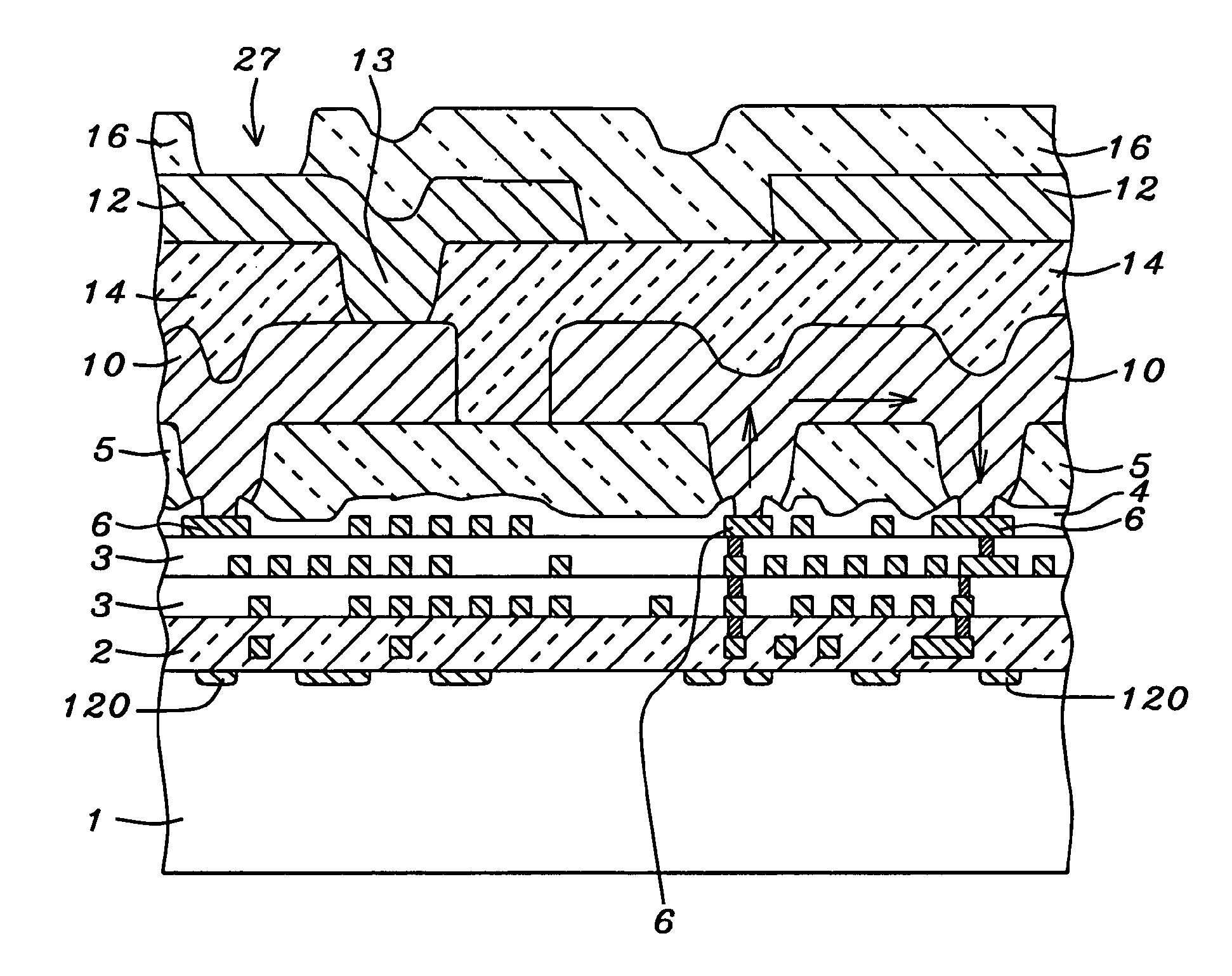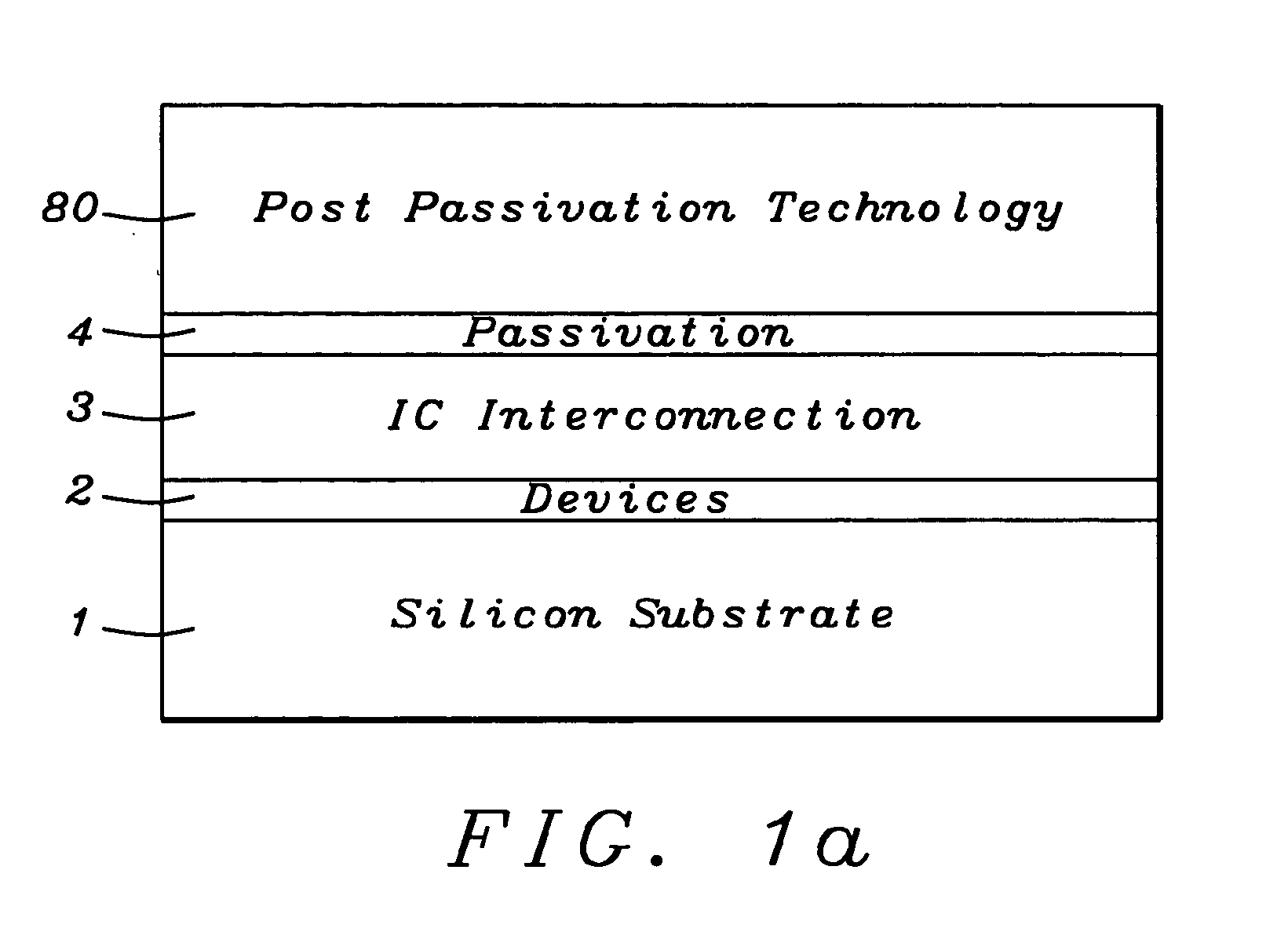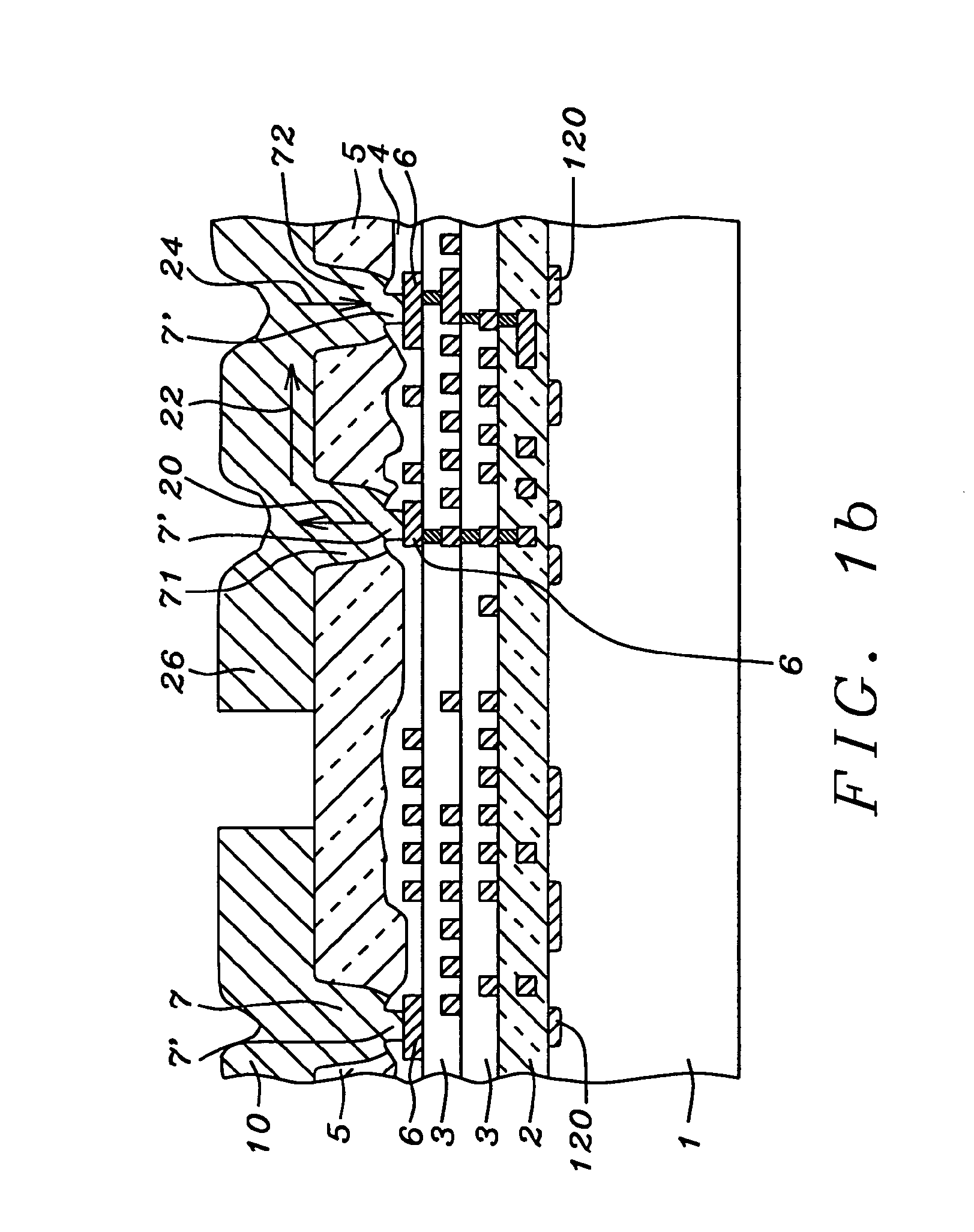Top Layers of Metal for Integrated Circuits
a technology of integrated circuits and top layers, which is applied in the direction of semiconductor devices, semiconductor/solid-state device details, inductances, etc., can solve the problems of increasing the negative impact of circuit performance, significantly reducing the performance of chips, and affecting the performance of high-performance integrated circuits. achieve the effect of improving the performance of high-performance integrated circuits
- Summary
- Abstract
- Description
- Claims
- Application Information
AI Technical Summary
Benefits of technology
Problems solved by technology
Method used
Image
Examples
Embodiment Construction
[0044] The present invention teaches an Integrated Circuit structure where key re-distribution and interconnection metal layers and dielectric layers are added over a conventional IC. These re-distribution and interconnection layers allow for wider buses and reduce conventional RC delay.
[0045]FIG. 1a shows a cross-sectional representation of a general view of the invention. Devices 2 are formed in and on a semiconductor substrate 1. These may be n-channel MOS devices, p-channel MOS devices, and / or CMOS devices. Metallization is accomplished in one or more layers of IC Interconnection 3, above the device layer. These metal layers are referred to as fine line metal interconnections. Typically, the intermetal dielectric (IMD) layers comprise silicon-based oxides, such as chemical vapor deposited (CVD) silicon oxide, CVD TEOS oxide, spin-on-glass (SOG), fluorosilicate glass (FSG), high density plasma CVD oxides, or the composite layer formed by a portion of this group of materials. The...
PUM
 Login to View More
Login to View More Abstract
Description
Claims
Application Information
 Login to View More
Login to View More - R&D
- Intellectual Property
- Life Sciences
- Materials
- Tech Scout
- Unparalleled Data Quality
- Higher Quality Content
- 60% Fewer Hallucinations
Browse by: Latest US Patents, China's latest patents, Technical Efficacy Thesaurus, Application Domain, Technology Topic, Popular Technical Reports.
© 2025 PatSnap. All rights reserved.Legal|Privacy policy|Modern Slavery Act Transparency Statement|Sitemap|About US| Contact US: help@patsnap.com



